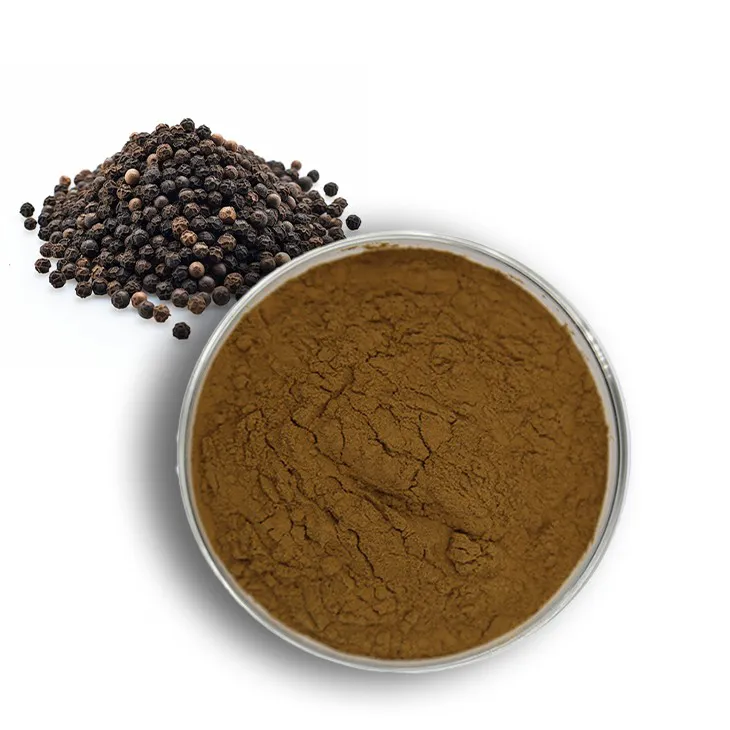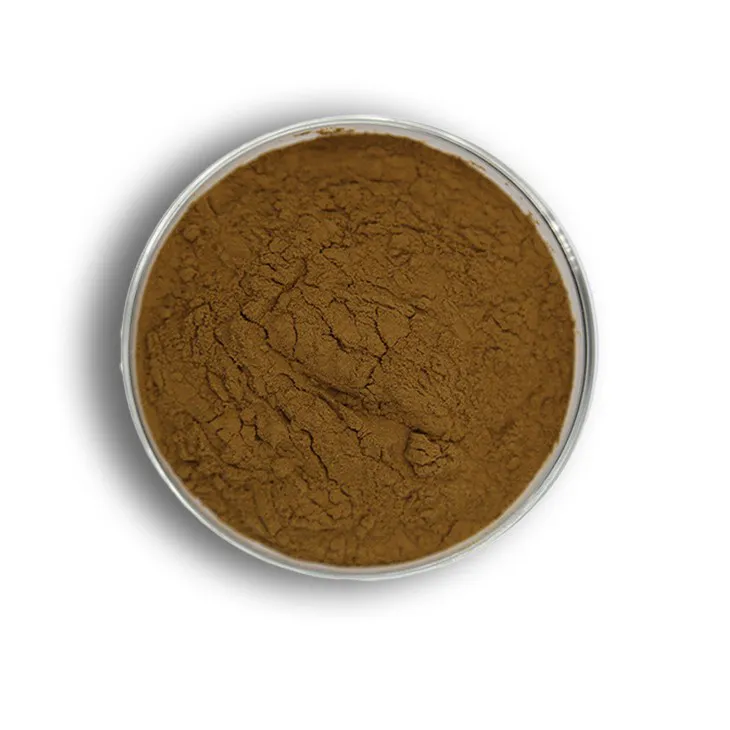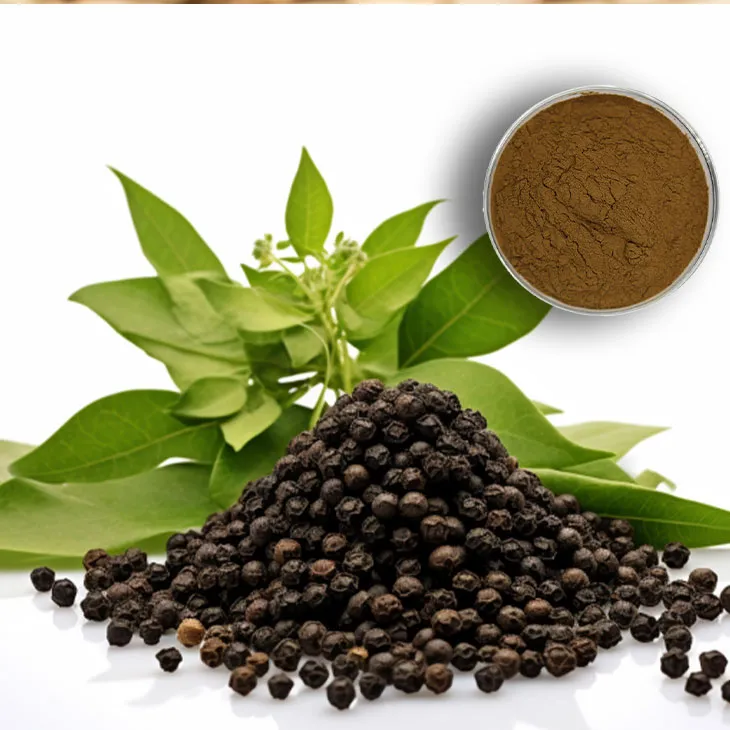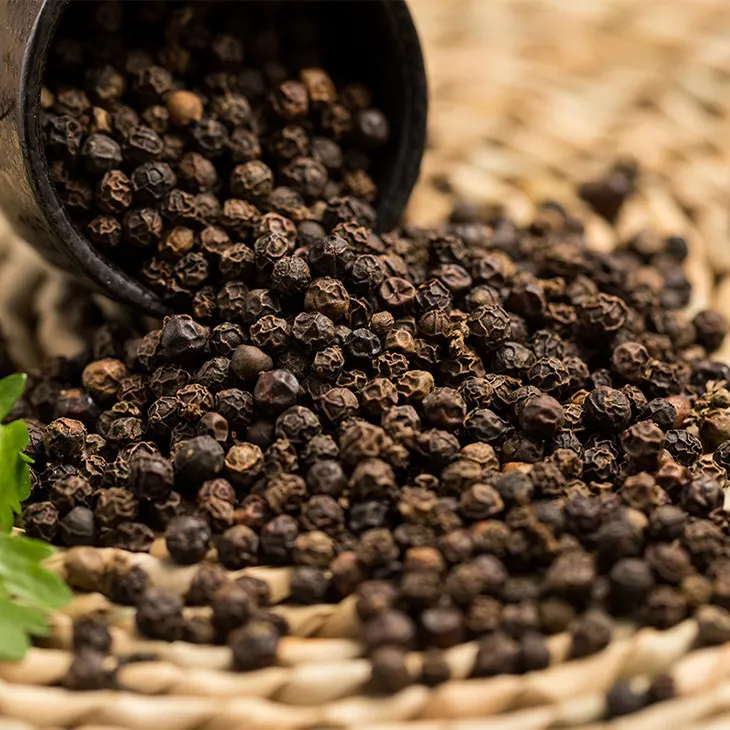- 0086-571-85302990
- sales@greenskybio.com
The process of extracting piperine from black pepper extract.
2024-11-30

1. Introduction
Black pepper (Piper nigrum) is one of the most widely used spices in the world. It contains a variety of bioactive compounds, among which piperine is the most important. Piperine is responsible for the pungency of black pepper and has been found to possess numerous biological activities. Extracting piperine from Black Pepper Extract is of great significance in the fields of medicine, food, and cosmetics. This article will provide a comprehensive guide to the extraction process of piperine from Black Pepper Extract.

2. The Significance of Piperine in Various Fields
2.1. In Medicine
Piperine has shown potential in various medical applications. It has been studied for its bioavailability - enhancing properties. Piperine can increase the absorption of certain drugs in the body. For example, it has been found to enhance the absorption of Curcumin, which is a well - known antioxidant and anti - inflammatory compound. This property of piperine could potentially improve the efficacy of many drugs that have poor absorption rates.
Moreover, piperine itself has antioxidant, anti - inflammatory, and antimicrobial activities. It may play a role in the prevention and treatment of various diseases, such as inflammatory bowel diseases, some types of cancers, and microbial infections. Research has indicated that piperine can modulate the immune system, which further adds to its potential medical applications.
2.2. In Food
In the food industry, piperine is not only responsible for the characteristic pungency of black pepper but also has other functions. It can act as a natural preservative. Due to its antimicrobial properties, it can help in inhibiting the growth of spoilage - causing microorganisms in food products. This can extend the shelf - life of certain foods.
Piperine also has the potential to enhance the flavor of food. It can interact with other flavor compounds, either enhancing or modifying their taste. For example, it can intensify the umami taste in some savory dishes. This makes it a valuable ingredient in the formulation of various food products, from traditional spices to modern processed foods.
2.3. In Cosmetics
In the field of cosmetics, piperine has been investigated for its skin - beneficial properties. It has antioxidant properties that can help in protecting the skin from oxidative damage caused by environmental factors such as UV radiation and pollution. This can potentially slow down the aging process of the skin, reducing the appearance of wrinkles and fine lines.
Piperine also has anti - inflammatory properties, which can be beneficial for treating skin conditions such as acne and eczema. It can soothe irritated skin and reduce redness. Some cosmetic products are starting to incorporate piperine as an active ingredient, either in creams, lotions, or serums.

3. Extraction Methods of Piperine from Black Pepper Extract
3.1. Solvent Extraction
Solvent extraction is one of the most common methods for extracting piperine from black pepper extract.
-
The first step is to prepare the black pepper extract. The black pepper is usually ground into a fine powder. This increases the surface area, allowing for better extraction. The powdered black pepper is then mixed with a suitable solvent. Commonly used solvents include ethanol, methanol, and ethyl acetate.
-
The mixture is then stirred or shaken for a certain period of time, usually several hours to ensure sufficient contact between the solvent and the black pepper components. This process allows the piperine to dissolve in the solvent.
-
After that, the mixture is filtered to separate the solid residue from the solvent - containing piperine. The filtrate is then concentrated, usually by evaporation under reduced pressure. This step is crucial as it helps to obtain a more concentrated piperine solution.
-
Finally, further purification steps may be required to obtain pure piperine. This can include techniques such as crystallization or chromatography.
Advantages of solvent extraction:
- It is a relatively simple and cost - effective method.
- It can be easily scaled up for industrial production.
- The choice of solvent is crucial. Some solvents may be toxic or flammable, which requires careful handling.
- The extraction efficiency may not be very high, and it may require multiple extractions to obtain a satisfactory yield.
3.2. Supercritical Fluid Extraction (SFE)
Supercritical fluid extraction is a more advanced extraction method.
-
In SFE, a supercritical fluid, most commonly carbon dioxide (CO₂), is used as the extracting agent. The black pepper extract is placed in an extraction vessel. The CO₂ is maintained in its supercritical state by adjusting the temperature and pressure. Supercritical CO₂ has properties similar to both a gas and a liquid, which gives it excellent solvent properties for piperine extraction.
-
The supercritical CO₂ is then passed through the black pepper extract. The piperine is selectively dissolved in the supercritical CO₂. The extraction process is carefully controlled by adjusting parameters such as temperature, pressure, and flow rate of the supercritical fluid.
-
After extraction, the piperine - laden supercritical CO₂ is passed through a separator. By changing the pressure and temperature conditions in the separator, the CO₂ is converted back to its gaseous state, leaving behind the piperine, which can be collected.
Advantages of SFE:
- It is a clean and environmentally friendly method as CO₂ is non - toxic, non - flammable, and easily available.
- The extraction selectivity is high, which means that it can produce a purer piperine extract compared to solvent extraction.
- The extraction process can be easily controlled by adjusting the operating parameters.
- The equipment for SFE is relatively expensive, which may limit its application in small - scale operations.
- The extraction process is more complex compared to solvent extraction and requires specialized knowledge and training.
3.3. Microwave - Assisted Extraction (MAE)
Microwave - assisted extraction is a relatively new method for piperine extraction.
-
The black pepper extract is placed in a suitable microwave - transparent container along with a solvent. Similar to solvent extraction, solvents like ethanol or methanol can be used.
-
The mixture is then exposed to microwave radiation. The microwave energy causes rapid heating of the solvent, which in turn enhances the mass transfer rate of piperine from the black pepper matrix to the solvent. This process significantly reduces the extraction time compared to traditional solvent extraction methods.
-
After the microwave treatment, the mixture is filtered and the filtrate is concentrated and purified in a similar way as in solvent extraction to obtain piperine.
Advantages of MAE:
- It has a shorter extraction time, which can increase the productivity of the extraction process.
- The extraction efficiency is relatively high as the microwave energy promotes better interaction between the solvent and the black pepper components.
- The method requires specialized microwave equipment, which may have a higher initial investment cost.
- The distribution of microwave energy may not be uniform, which can lead to inconsistent extraction results.

4. Comparison of Different Extraction Methods
When comparing the three extraction methods - solvent extraction, supercritical fluid extraction, and microwave - assisted extraction - several factors need to be considered:
-
Extraction Efficiency: Supercritical fluid extraction and microwave - assisted extraction generally have higher extraction efficiencies compared to solvent extraction. However, the actual efficiency also depends on the specific operating conditions and the quality of the black pepper extract used.
-
Purity of the Extract: Supercritical fluid extraction is likely to produce a purer piperine extract due to its high selectivity. Solvent extraction may require more purification steps to achieve the same level of purity, while microwave - assisted extraction may produce an extract with some impurities depending on the extraction conditions.
-
Cost: Solvent extraction is the most cost - effective method in terms of equipment and operation. Supercritical fluid extraction has a relatively high equipment cost, and microwave - assisted extraction also requires an investment in specialized microwave equipment.
-
Environmental Impact: Supercritical fluid extraction using CO₂ is the most environmentally friendly method as it uses a non - toxic and non - flammable solvent. Solvent extraction may involve the use of toxic solvents, and proper waste disposal is required. Microwave - assisted extraction has a relatively low environmental impact as long as the solvents used are properly managed.

5. Conclusion
Piperine extraction from black pepper extract is an important process with wide - ranging applications in medicine, food, and cosmetics. Different extraction methods, including solvent extraction, supercritical fluid extraction, and microwave - assisted extraction, each have their own advantages and limitations. The choice of extraction method depends on various factors such as extraction efficiency, purity requirements, cost, and environmental impact. As research continues, new and improved extraction techniques may emerge, further enhancing the potential of piperine in various fields.
FAQ:
1. What are the common extraction methods for piperine from black pepper extract?
There are several common methods for extracting piperine from black pepper extract. One is solvent extraction, which involves using organic solvents like ethanol or methanol to dissolve piperine from the black pepper extract. Another method is supercritical fluid extraction, typically using supercritical CO₂. Solvent extraction is relatively simple and cost - effective but may leave some solvent residues. Supercritical fluid extraction can produce a purer product with fewer residues, but it requires more specialized equipment and higher costs.
2. What are the advantages of piperine?
Piperine has several advantages. In the field of medicine, it has been shown to have anti - inflammatory properties, which can potentially help in treating various inflammatory diseases. It also has bioavailability - enhancing effects, meaning it can increase the absorption of other drugs or nutrients in the body. In the food industry, piperine contributes to the pungent flavor of black pepper, enhancing the taste of various dishes. Additionally, in some traditional medicine systems, it is used for its digestive - promoting properties.
3. What are the limitations of the traditional extraction methods of piperine?
The traditional solvent extraction method for piperine has some limitations. As mentioned before, solvent residues can be a problem, which may affect the purity and quality of the final product. It may also be less efficient in extracting all of the available piperine from the black pepper extract. Moreover, traditional methods may require longer extraction times and larger amounts of solvents, which can be both time - consuming and environmentally unfriendly.
4. How is the purity of piperine determined after extraction?
After extraction, the purity of piperine can be determined through various analytical techniques. High - performance liquid chromatography (HPLC) is a commonly used method. In HPLC, a sample of the extracted piperine is injected into a column filled with a stationary phase, and a mobile phase is passed through it. The different components in the sample, including piperine, will elute at different times, and their concentrations can be measured based on the detector response. Other techniques such as gas chromatography - mass spectrometry (GC - MS) can also be used, especially for more detailed analysis of the chemical composition of the extract.
5. What are the applications of piperine in the pharmaceutical industry?
In the pharmaceutical industry, piperine has multiple applications. Due to its bioavailability - enhancing effects, it can be used in combination with other drugs to improve their absorption in the body. For example, it has been studied in combination with certain anti - cancer drugs to potentially increase their efficacy. It also has potential as an anti - inflammatory agent on its own, which could be developed into new drugs for treating inflammatory - related diseases such as arthritis. Additionally, its antioxidant properties may play a role in preventing or treating diseases related to oxidative stress.
Related literature
- Piperine: A Review of Its Anticancer Effects"
- "Piperine and Bioavailability Enhancement: An Overview"
- "The Role of Piperine in Inflammatory Diseases"
- ▶ Hesperidin
- ▶ Citrus Bioflavonoids
- ▶ Plant Extract
- ▶ lycopene
- ▶ Diosmin
- ▶ Grape seed extract
- ▶ Sea buckthorn Juice Powder
- ▶ Fruit Juice Powder
- ▶ Hops Extract
- ▶ Artichoke Extract
- ▶ Mushroom extract
- ▶ Astaxanthin
- ▶ Green Tea Extract
- ▶ Curcumin
- ▶ Horse Chestnut Extract
- ▶ Other Product
- ▶ Boswellia Serrata Extract
- ▶ Resveratrol
- ▶ Marigold Extract
- ▶ Grape Leaf Extract
- ▶ New Product
- ▶ Aminolevulinic acid
- ▶ Cranberry Extract
- ▶ Red Yeast Rice
- ▶ Red Wine Extract
-
Carrageenan Extract Powder
2024-11-30
-
Clove Powder
2024-11-30
-
Alfalfa Meal
2024-11-30
-
Lavender Extract
2024-11-30
-
Coconut Water Powder
2024-11-30
-
Curcumin Extract
2024-11-30
-
Tormentil Extract
2024-11-30
-
Troxerutin
2024-11-30
-
Phyllanthus Emblica Extract
2024-11-30
-
Pine bark Extract Powder
2024-11-30





















